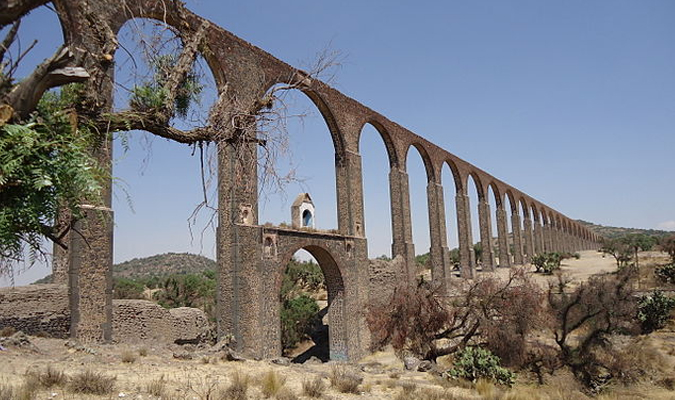Last week the UNESCO World Heritage Committee gathered in Bonn, Germany for the 39th Session of their annual committee meeting. In this meeting the representatives added 27 properties to the UNESCO World Heritage List (24 cultural, 2 natural, and 1 mixed). The new 27 properties come from 24 different counties, with Mexico included naming The Aqueduct of Padre Tembleque Hydraulic System to be recognized for having outstanding universal value to mankind.
The Aqueduct of Padre Tembleque (El Acueducto del padre Tembleque o Acueducto de Tembleque) spans 45km (28mi) long from Zempoala, Hidalgo to Otumba, Mexico State. Initiated by the Franciscan friar, Padre Temleque, it was built in the 16th century with support from local indigenous communities. It incorporates the highest single-level arcade ever built in an aqueduct with 145 arches and is an important example of the exchange of influences between Europe and pre-Hispanic culture.
It was selected as UNESCO World Heritage Site based on the criteria that it represents a masterpiece of human creative genius; exhibits an important interchange of human values, over a span of time or within a cultural area of the world, on developments in architecture or technology, monumental arts, town-planning or landscape design; and to be an outstanding example of a type of building, architectural or technological ensemble or landscape which illustrates significant stages in human history.
This is the first UNESCO World Heritage Site to be added to Mexico since El Pinacate and Gran Desierto de Altar Biosphere Reserve in 2013. Mexico how has a total 33 Cultural and Natural World Heritage Sites – more than any other country in the Americas, and 6th worldwide.

“Acueducto del Padre tembleque” by Carmelita Thierry – Own work. Licensed under CC BY-SA 3.0 via Wikimedia Commons
TO DISCOVER UNESCO WORLD HERITAGE SITES AND CITIES IN MEXICO, CLICK HERE:
UNESCO World Heritage Cities
Culture of Mexico Experience





